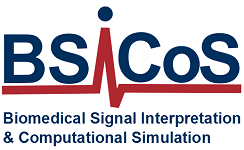Fecha de inicio
2018
Fecha de finalización
2019
Coordinador
David Izquierdo
IP BSICoS: Eduardo Gil
Funding agency
Universidad de Zaragoza, CUD Zaragoza
UZCUD2018-TEC-07
The Autonomous Nervous System (ANS) is in charge of maintaining homeostasis or internal balance of our body through the control of various physiological systems. The monitoring and quantification of the balance of its two branches (sympathetic and parasympathetic) is of great relevance in order to understand its regulation mechanisms, with multiple applications in preventive medicine and in on-line monitoring of physical activity.
This project aims to optimize, improve and adapt the opto-electronic device developed in three previous projects (UZCUD2015-TEC-03, UZCUD2016-TEC-03 and UZCUD2017-TEC-04) so that it allows the evaluation of ANS in a non-invasive way in environments underwater through the photoplethysmographic signal (PPG). To do this, it is necessary to optimize and adapt the device to the new conditions and evaluate the most suitable portable platform to perform real-time processing of the captured signal and to estimate heart rate variability, a parameter that is closely related to ANS. In addition, to obtain a more robust measurement, other body temperature sensors, a pressure sensor and an accelerometer have been incorporated into the device to detect artifacts in the PPG signal, whether produced by the movement of the subject or by changes in environmental conditions. The pressure sensor will also allow the search for correlations between the markers detected in the recorded signals and said pressure or depth of immersion. The fusion of the data from all these sensors will be one of the tasks to be carried out during this project.
Therefore, the main objective of this project is to improve, adapt and perfect the device for monitoring the PPG/ANS in underwater activities by integrating it into the diving equipment.
These new optimized and improved devices will be evaluated and validated based on the quality of the signal recorded during the simulation of situations similar to those that can be experienced in these underwater environments. In addition, the comfort and/or interference in the activity that the new device may generate when integrating it into the diving equipment will be evaluated.
